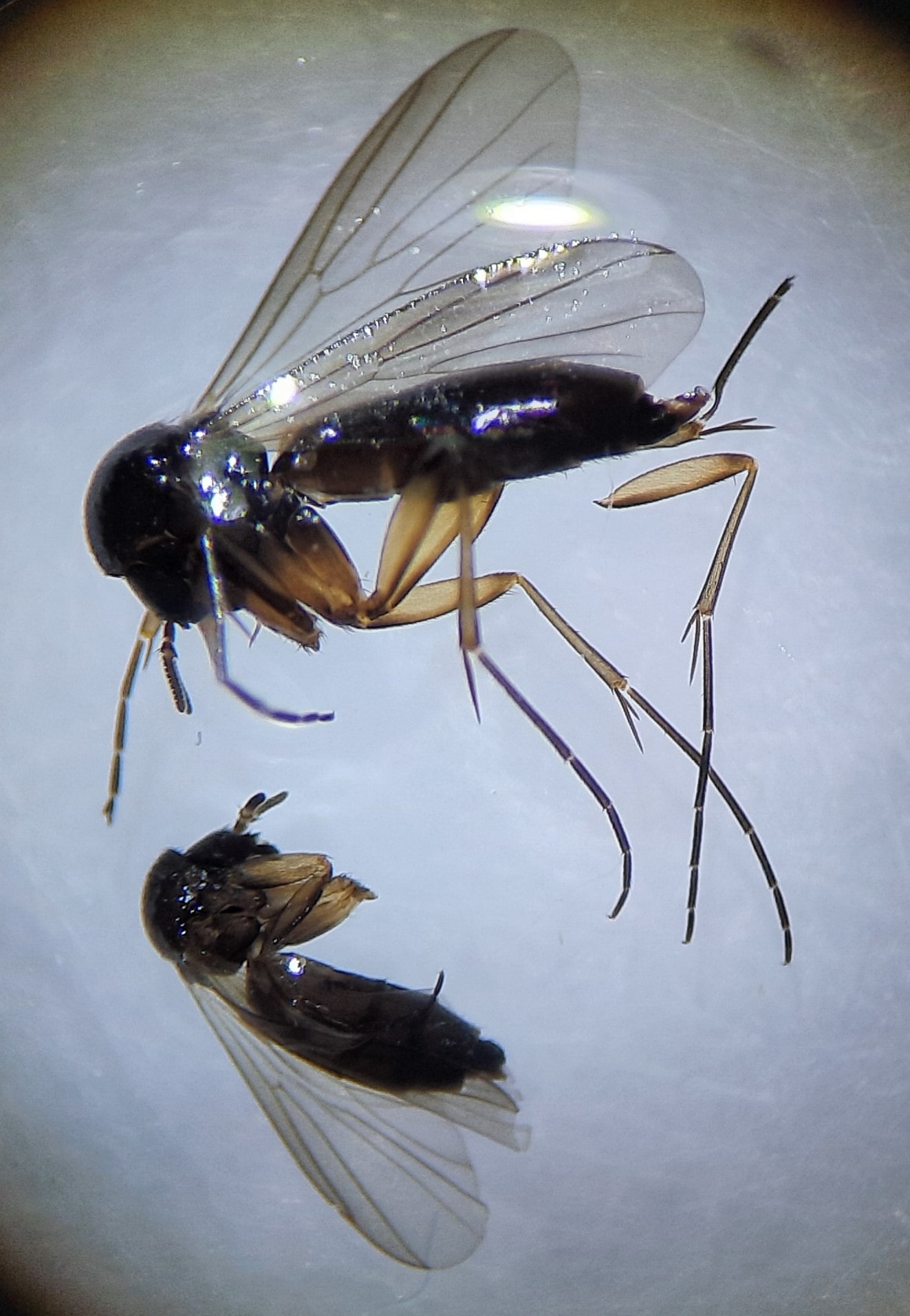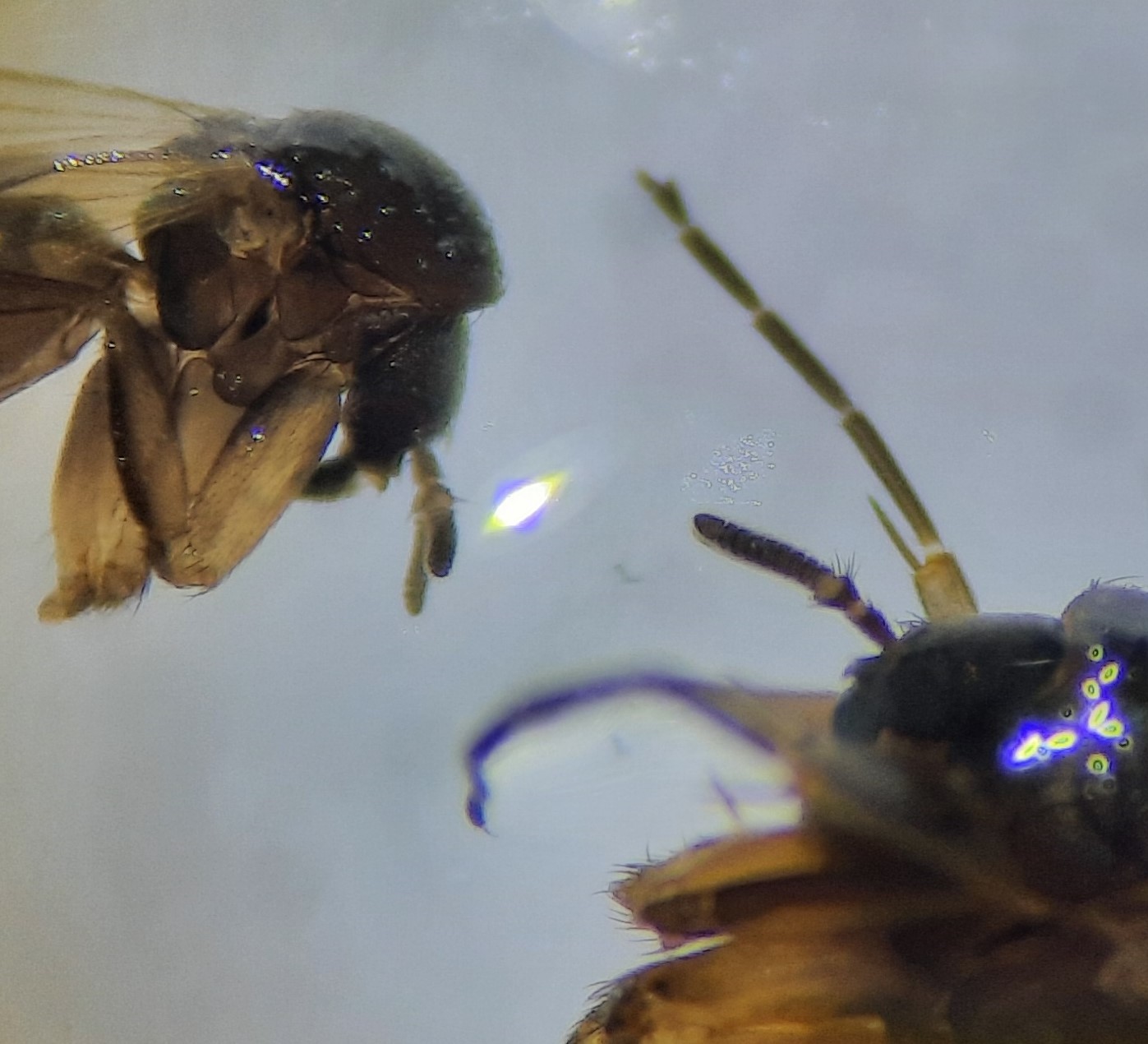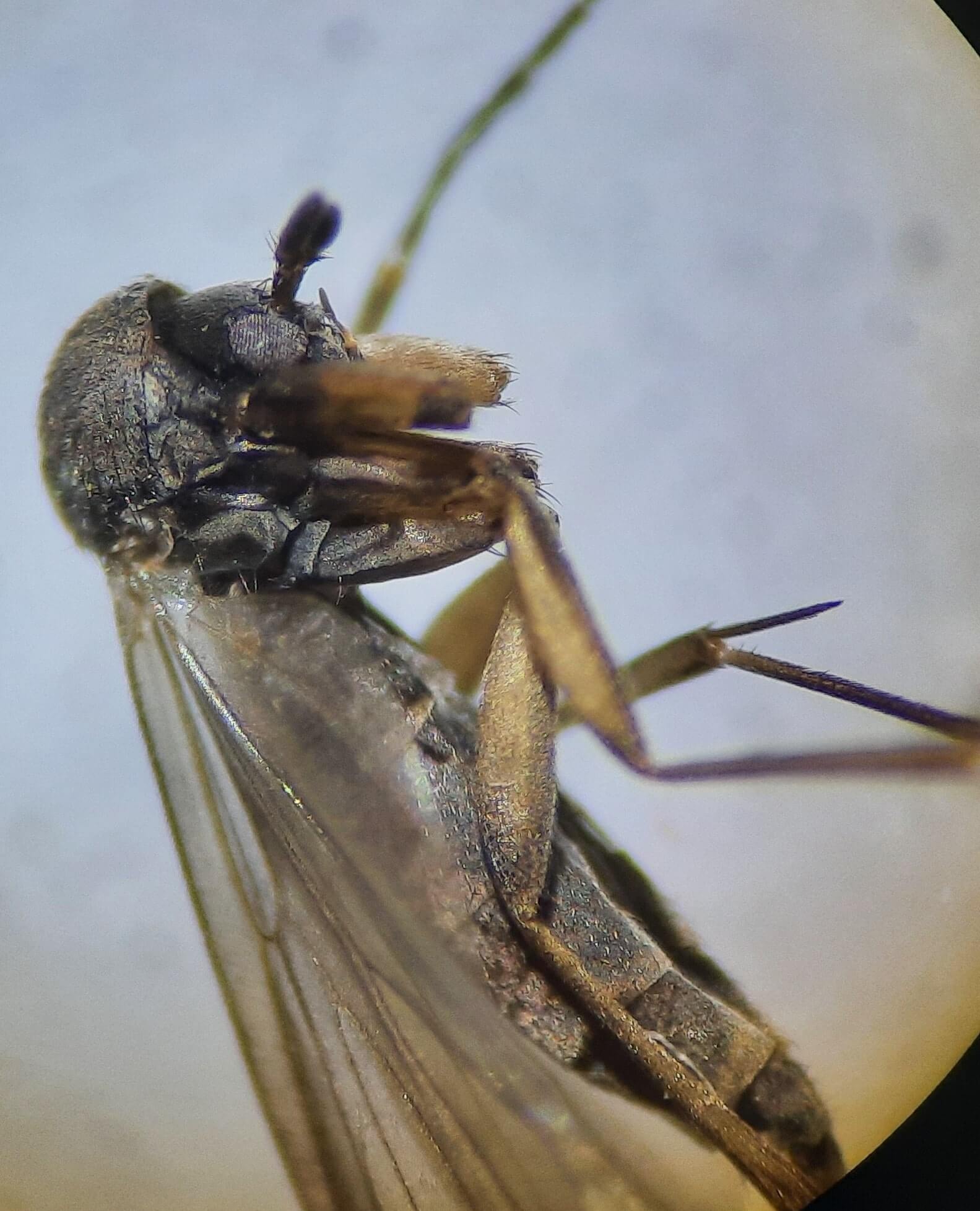Diptera.info :: General Diptera forums :: Overviews
|
Are Mycetophilidae adults known to live underground?
|
|
| Jef Hendrix |
Posted on 04-03-2021 12:13
|
|
Member Location: Turnhout, Belgium Posts: 60 Joined: 17.06.11 |
Two Brevicornu spec. were found in an underground pitfall trap (not accessible from the surface) in Belgium. They can only have entered the trap by digging in the soil. Does anyone know about Mycetophilidae adults living/digging in the soil? I can't find anything about this behaviour in this family. -Do they dig for the oviposition in underground fungi? -Do pupae 'hatch' underground? (this doesn't seem likely to be the explanation, because the wings where fully developped) (Just one of my toughts, without real scientific base  : 'Digging' could to be a possible evolutionary explanation for the short antennae (much shorter than any other Mycetophilidae) ) : 'Digging' could to be a possible evolutionary explanation for the short antennae (much shorter than any other Mycetophilidae) )There doesn't seem to be much knowledge about the ecology of Brevicornu species, or at least I can't find it. So I'm interested in anything about the genus, because I'm intrigued by this observation of underground adults. Thanks Jef |
|
|
|
| Jostein Kjaerandsen |
Posted on 04-03-2021 15:51
|
|
Member Location: Posts: 3 Joined: 04.03.21 |
This is interesting observations indeed, but I need more information to give good answers. You write you have identified two species of the genus Brevicornu. This does not match the observation of short antennae. Do you have images? I suspect it is rather species in the genus Stigmatomeria (formerly regarded as members of Brevicornu) or Cordyla. Both these genera have shortened antenna. Stigmatomeria is known to infest truffles, but nobody knows exactly how they do it. Their antennae are not very short, but swollen and full of sensory pits. Probably they can smell their way to truffles. Cordyla have shorter antennae, and their sensory pits are in the palps. Their larvae infest mushrooms from the ground and up, and probably the female lay eggs before the sporophore emerges. My best guess based on your info is that it may be Stigmatomeria adults hatching from truffles underground. How deep was it? Which season? |
|
|
|
| Jef Hendrix |
Posted on 05-03-2021 11:37
|
|
Member Location: Turnhout, Belgium Posts: 60 Joined: 17.06.11 |
I have no experience with this family, so I could be mistaken of course. Also the only key I found is terribly outdated. Taxonomy and synonymity was probably still a mess in that time. It keys out in Allodia, but it seems Brevicornu, Cordyla and Stigmatomeria were all regarded as members of genus Allodia? Following your descriptions, I suppose it is Cordyla spec. The antennae are shorter and not just thickened and I can't see sensory pits in the antennae. My microscope is not strong enough to see sensory pits in the palps. I will add some pictures, maybe they can help identifying them. The pitfall was placed with the opening at a depth of 10 cm. The speciemens were caught in february. Jef Hendrix attached the following image:  [293.54Kb] Edited by Jef Hendrix on 05-03-2021 11:41 |
|
|
|
| Jef Hendrix |
Posted on 05-03-2021 11:42
|
|
Member Location: Turnhout, Belgium Posts: 60 Joined: 17.06.11 |
.
Jef Hendrix attached the following image:  [263.94Kb] |
|
|
|
| Jef Hendrix |
Posted on 05-03-2021 11:49
|
|
Member Location: Turnhout, Belgium Posts: 60 Joined: 17.06.11 |
.
Jef Hendrix attached the following image:  [216.21Kb] Edited by Jef Hendrix on 05-03-2021 11:49 |
|
|
|
| Paul Beuk |
Posted on 05-03-2021 12:56
|
|
Super Administrator Location: Netherlands Posts: 19403 Joined: 11.05.04 |
These are indeed Cordyla. The smaller one appears to be a male of C. crassicornis (M2 reaching wing margin, M-petiole about four times as long as r-m), the larger one is a female of another species (M2 not reaching wing margin, M-petiole about 2.5 times as long as r-m) but I do not know which one. It looks as if the antennal flagellum has only nine segments but I have no idea which species that might be., then. Perhaps C. fissa? Jostein?
Paul - - - - Paul Beuk on https://diptera.info |
| Jostein Kjaerandsen |
Posted on 05-03-2021 14:30
|
|
Member Location: Posts: 3 Joined: 04.03.21 |
Yes, I can also confirm that they all belong to Cordyla. These are quite difficult to identify the species, it often requires to see details of cleared and detached terminalia. Very interesting indeed, and new information on this genus as far as I know. Members of the genus are often reared from above ground muchrooms, typically of the genus Boletus. I dont know of any reports from underground fungi, but from your information it might be suggested. Still, February as season would maybe rather suggest some kind of overwintering strategy underground. Many fungus gnats seek to caves for hibernation, but I guess your site was not connected to any larger underground hollows? They could seek down through rather small tunnels dug by for instance earth worms. This is just speculation from my side. Alternatively, they hatch from some underground fungi and crawl to the surface in early springtime. The latter sounds unlikely if the soil was normally packed. |
|
|
|
| Jostein Kjaerandsen |
Posted on 05-03-2021 14:30
|
|
Member Location: Posts: 3 Joined: 04.03.21 |
If you send them to me I can identify the males at least, are they fresh enough I could also DNA-barcode them. |
|
|
|
| Jef Hendrix |
Posted on 19-03-2021 11:09
|
|
Member Location: Turnhout, Belgium Posts: 60 Joined: 17.06.11 |
I can send you the specimens, together with two Mycetophilidae (Exechia, I think) from the above ground soil trap (Exechia, I think). I will send you a private message. |
|
|
|
| Jump to Forum: |













